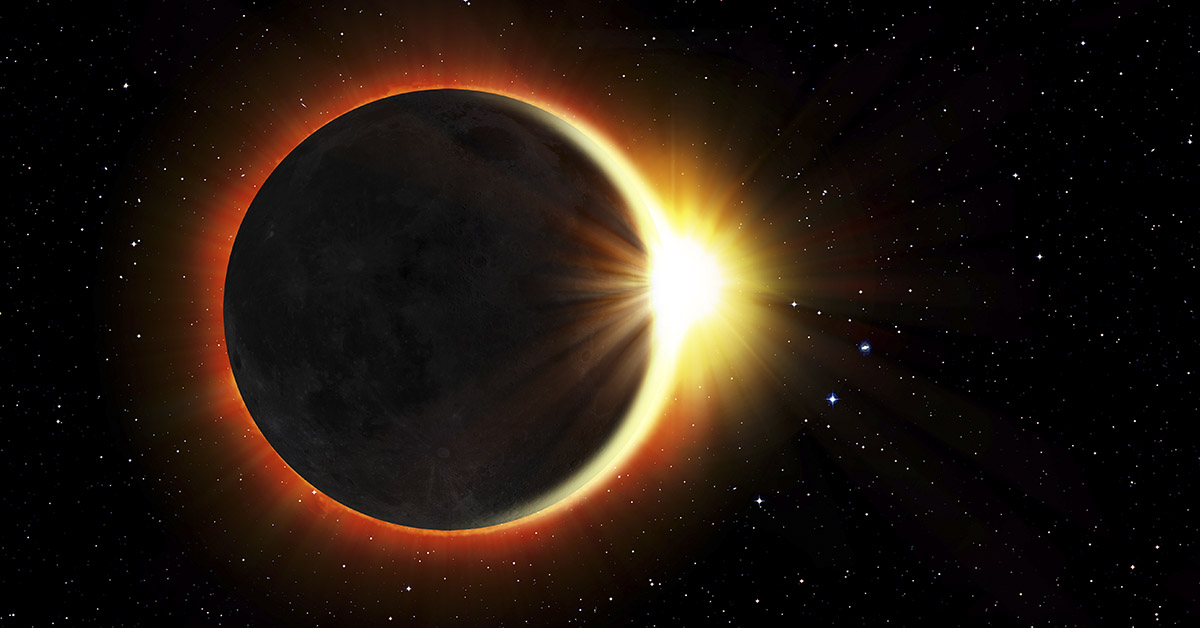Unless you were living under a rock, you probably already know that on April 8, 2024, a complete eclipse swept across parts of North America. Unlike the eclipse in 2017, this one occurred at the same time as the sun maximum. It was a spectacular show for those who were in the path of totality. That is, if the cloud cover permitted.
“The Sun was getting close to solar minimum in 2017.” People who saw the complete eclipse could see the beautiful corona, but because the Sun was quiet, coronal streamers entering the solar atmosphere could only come from the star’s equatorial regions, according to NASA.
Supercharged Sun During Eclipse
“The eclipse in 2024 will happen when the Sun is at or near its strongest, and its magnetic field will be more like a tangled hairball.” Streamers will were seen all over the corona. Also, people had a better chance of seeing prominences, which are bright pink loops or curls that come off the Sun.
From Mexico to Canada, everyone should have been able to see the eclipse. People saw a wider path of totality than in 2017 because the Moon is closer to Earth because of its orbit. This means that more people can see the Sun’s corona. NASA even said that they might see a coronal mass release during the eclipse if they’re lucky.
Of course, if you’re using proper protective eyewear, the eclipse won’t hurt people us poor Earthlings. In reality, the Moon is just a big, rocky cover that shields us from UV rays for a short time. That being said, why were there so many alerts this year about the eclipse? Besides telling people to stock up on food, water, and gas, emergency officials have also said that schools should be closed and people should get goods for their pets.
Tourist Surge Strains Resources
Simply put, it’s because of the expected rise in tourists who will be visiting because of the eclipse. This was thought to possibly put a lot of stress on local transportation and emergency services, which weren’t set up to handle so many people at once. To cut down on the number of cars on the road on eclipse day, people were told to stock up ahead of time.
“What we could have is crowds here that we’re not used to,” Dave Freeman, head of the Lorain County Emergency Management Agency, said in a statement seen by USA Today. He also told people in the area to get extra supplies. “That wouldn’t work for us because we don’t have the right roads.”
Freeman told Yahoo News, “A lot of the roads here are two lanes.” The traffic could be pretty bad here if we get more people than we thought. This isn’t Chicago or Cleveland, where we have a lot of four- and six-lane roads coming in.
Cellphone traffic was also thought to increase, and authorities had been telling schools in some Texas counties to close so that the school run didn’t add to the traffic problems.
Some will say, ‘We didn’t have these kinds of warnings in 2017 or some other eclipse, and everything was fine!‘ Which actually isn’t true. The local government expected more people to visit before the 2017 eclipse, and traffic was still a problem.
Eclipse Traffic Jams: Lessons Learned
According to Transportation Research News, transportation planning consultant Jonathan Upchurch said, “The millions of people who came to places along the eclipse path put a strain on limited transportation facilities, and traffic jams were severe in many places.”
“Across the country, Interstate highways close to the path of totality had heavy traffic right after the eclipse, making travel times longer than usual on those highways.” For instance, it took 10 hours or more to get from Casper, Wyoming, to Denver, Colorado, which is usually a 4-hour trip. There was a lot of traffic on country Interstates for up to 13 hours after the eclipse.
Besides that, there were signs before the 2017 eclipse, but you might have missed them. Also, they worked, so it makes sense that the government is using them before this year’s eclipse.
“The data showed that Oregon, Idaho, and Wyoming had the most significant increase in traffic on the day of the eclipse compared to other states,” says a paper about how to handle traffic during the 2017 eclipse.
“Interestingly, Nebraska, Kansas, and Missouri had reduced daily traffic, one of the reasons might be the advice from transportation agencies for people to reduce their errands during the eclipse week.”
This content has, in part, been generated with the aid of an artificial intelligence language model. While we strive for accuracy and quality, please note that the information provided may not be entirely error-free or up-to-date. We recommend independently verifying the content and consulting with professionals for specific advice or information. We do not assume any responsibility or liability for the use or interpretation of this content.

